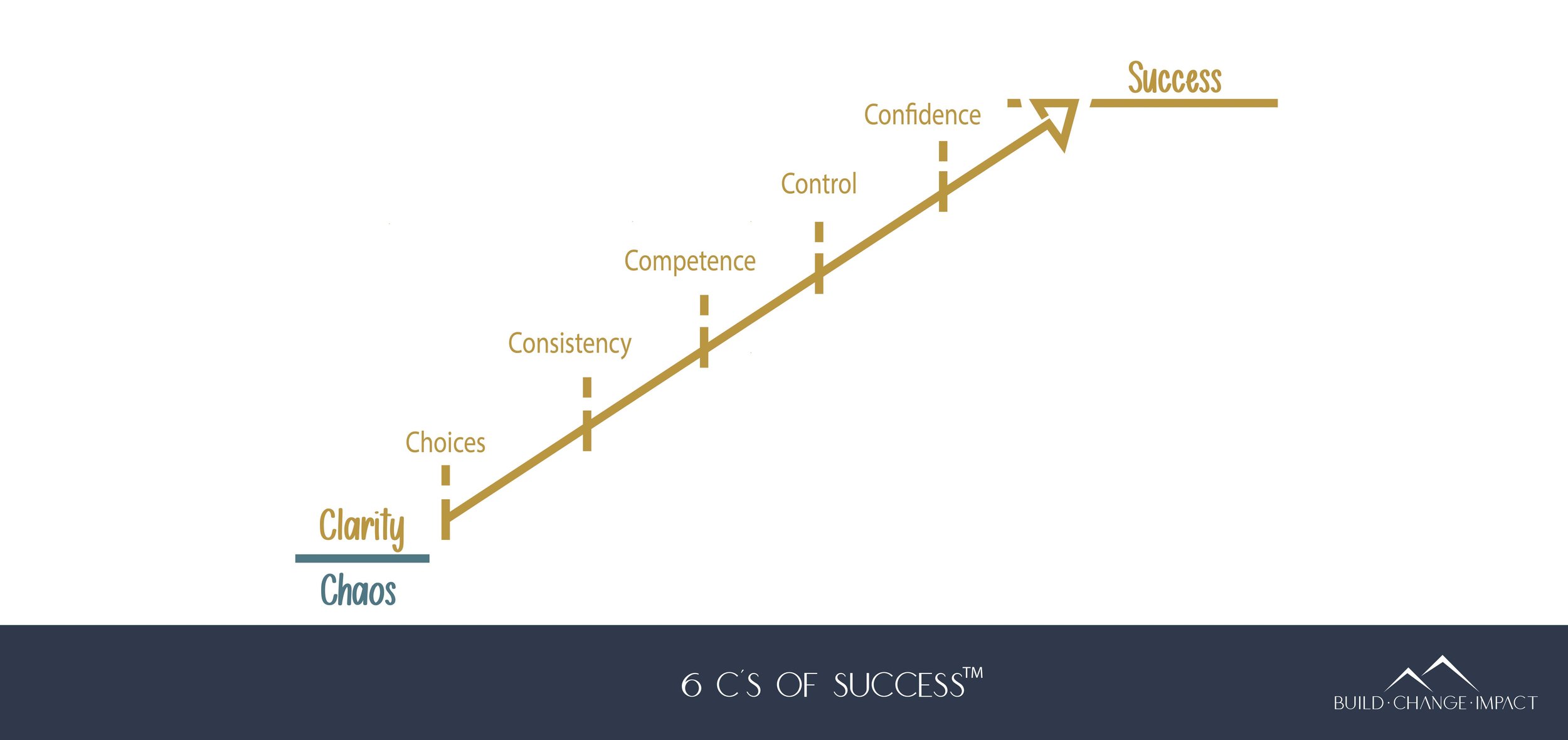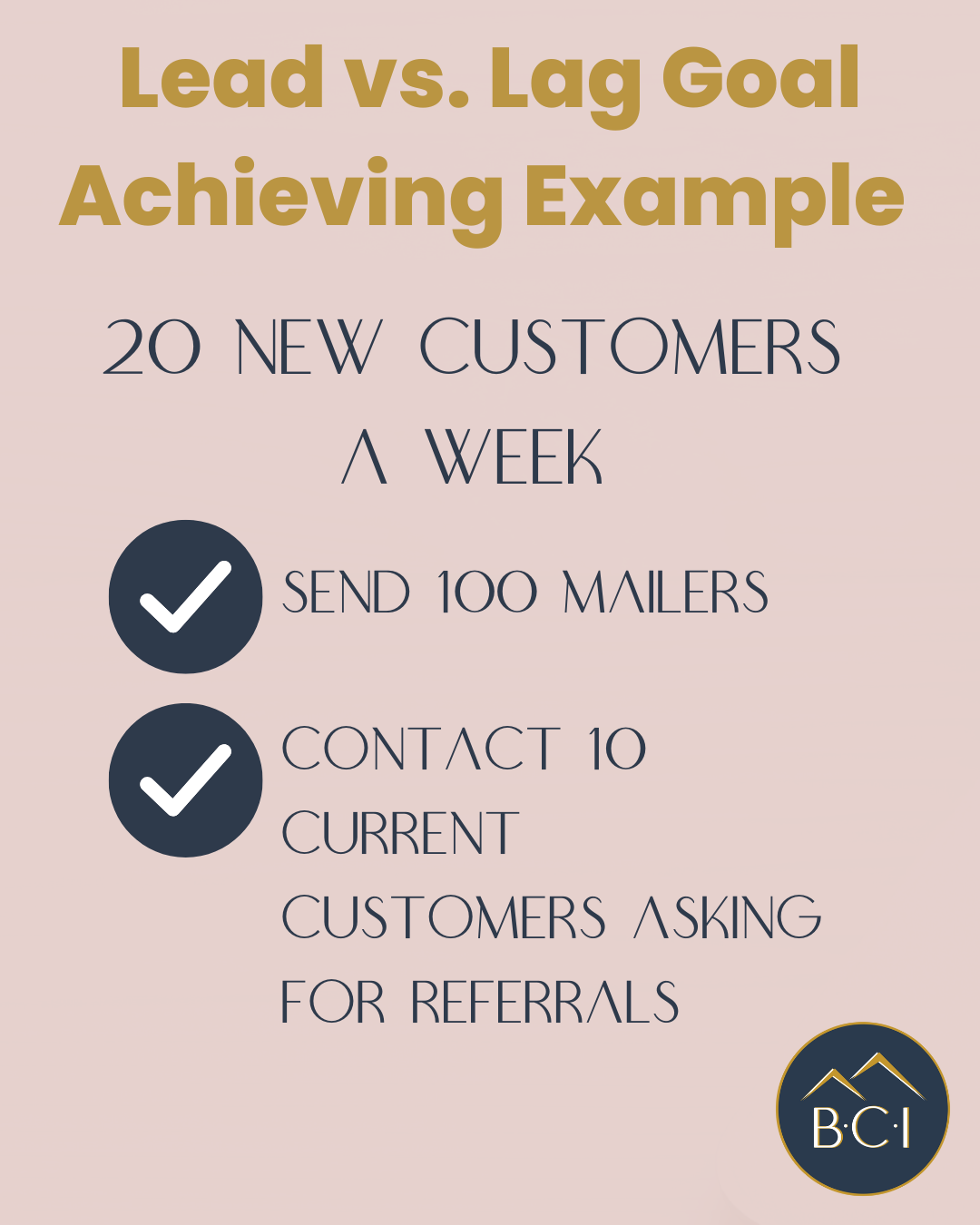Achieving Your Goals: How the 6 C's and Trust in God Can Help Small Business Owners Overcome Obstacles
Running a small business can be a challenging endeavor, with countless obstacles and roadblocks along the way. But achieving success is possible by using the 6 C's To Success model: clarity, choices, consistency, competence, control, and confidence. Each of these factors is essential in building a strong foundation for your business and achieving your goals. However, it's important to remember that success also requires relying on God's guidance and grace. The biblical story of the Israelites and manna teaches us that we must take action and use the tools provided to us while also trusting in God to fulfill the desires of our hearts. By combining the 6 C's with faith in God, small business owners can overcome obstacles and achieve greatness.
As a small business owner, it can be difficult to navigate the many challenges that come with running a successful company. There are countless factors that contribute to success, and it can be hard to know where to focus your efforts. That's why we've developed the 6 C's To Success model, a framework designed to help you build a strong foundation for your business and achieve your goals.
The 6 C's are clarity, choices, consistency, competence, control, and confidence. Think of them as a ladder, with each one building onto the last. You can't make a choice unless you have clarity about the choices you have available to you. The same is true with consistency - you can't be consistent unless you've made a choice and know what you're being consistent in. Each of the 6 C's is important, and together they create a powerful foundation for success.
But there's more to success than just hard work and dedication. As the biblical lesson of the Israelites and manna shows us, sometimes we need to rely on God to truly achieve our goals. The people of Israel were provided with manna, a miraculous food that sustained them as they traveled to their promised land. But even though the manna was freely given, the people still had to do their part and go out and collect it. God didn't just hand them everything on a silver platter - they had to work for it.
This is a powerful lesson for small business owners. We can't just sit back and wait for success to come to us. We need to take action and use the tools that have been given to us. The 6 C's To Success model is one of those tools - it provides a framework for building a strong business foundation. But we also need to remember that sometimes we need to rely on God truly achieve our goals. As Psalm 127:1 says, "Unless the Lord builds the house, the laborers labor in vain." We need to delight ourselves in the Lord and trust that he will fulfill the desires of our hearts.
As small business owners, we face many challenges and obstacles on our journey to success. But by following the 6 C's To Success model and relying on God and the Holy Spirit which we now have access to, we can build a strong foundation for our businesses and achieve our goals. So go out there, collect your manna, and build your business - with the help of the Lord and by implementing the 6 C's To Success, you can achieve great things.
If you're ready to take your business to the next level by implementing the 6 C's To Success but would benefit from additional support, don't hesitate to reach out for personalized coaching and guidance. Schedule a call today and let’s work to achieve greatness in your business!
Boosting Small Business Growth with Lead and Lag Indicators
For small businesses, setting goals is crucial, but not all goals are created equal. Lead indicators help predict future outcomes, while lag indicators measure success after the fact. Effective goal-setting involves using both lead and lag indicators and prioritizing benchmarking and measuring metrics and KPIs. By focusing on lead indicators like proactive outreach and referrals, small business owners can achieve their lag indicators, leading to improved sales performance and growth opportunities.
If you own a small business setting goals is important for your growth and success. But not all goals are the same. You need to know the difference between lead and lag indicators when you set your goals.
Lead indicators help you predict whether you're on track to achieve your goals. For example, if your goal is to increase sales by 20% over the next quarter, a lead indicator might be the number of new leads you get each week. By tracking this number, you can see whether you're on track to meet your sales target and make changes if needed.
Lag indicators show you how successful you were after the fact. For example, if your goal is to increase customer satisfaction, a lag indicator might be the percentage of customers who rate your service as "excellent" on a customer survey. Although lag indicators are important, they're not as useful for predicting future outcomes.
To set effective goals, you should use a mix of lead and lag indicators. Lead indicators help you stay on track and make adjustments if needed. Lag indicators measure your success after the fact. By setting goals that include both lead and lag indicators, you can make sure you're taking a proactive approach to achieving your business objectives.
As a small business owner, you might not have a lot of resources for sales enablement. So, it's essential to identify the most impactful metrics, KPIs, and activities that positively impact your revenue outcomes. Measuring sales productivity can be challenging, especially if you don't know how to measure and determine impact and value. It can also be hard to get stakeholders to agree on which metrics matter most.
To overcome these challenges, you should prioritize benchmarking and measuring metrics and KPIs. Evaluate the metrics you're currently using to make sure they directly measure and determine impact and value. Knowing the activity, conversion rate, and outcome metrics can help you determine sales productivity and set ways for these metrics to lead to achieving your company's objectives.
Let's say you're a sales manager for a software company and your goal is to acquire 20 new customers per week. To achieve this goal, you'll need to identify the lead indicators that will drive the desired outcome.
One lead indicator could be to send 100 mailers to potential new customers each week. This is because sending mailers is a proactive step that can generate interest in your software among potential customers. By sending out a specific number of mailers each week, you can create a measurable metric that you can track and adjust as needed.
Another lead indicator could be to contact 10 current customers and ask for referrals each week. This is because referrals can be a highly effective way to generate new leads. By actively seeking referrals from your existing customer base, you can tap into their networks and potentially reach new customers who are more likely to be interested in your software.
By focusing on these lead indicators, you can create a clear plan of action that will help you achieve your lag indicator of 20 new customers per week. By tracking your progress on a regular basis and making adjustments as needed, you can increase your chances of reaching your sales goals and growing your business over time. This can lead to greater teamwork within your sales team, increased sales performance metrics, and improved sales effectiveness and efficiency.
Some lead indicators that can provide insight into sales productivity include the number of calls made, emails sent, videos shared, meetings scheduled, opportunities created, and the value of those opportunities. Using these metrics to coach your team can boost productivity, ensure revenue goals, and promote continuous growth within your sales cycle and future growth.
In conclusion, lead and lag indicators are important for any small business owner looking to set and achieve goals. If you need additional help in setting goals that have both lead and lag indicators for your small business, complete a FREE Business Assessment and Schedule a Coaching Call with Stacey, a Certified Business Made Simple Coach with Build. Change.Impact.






